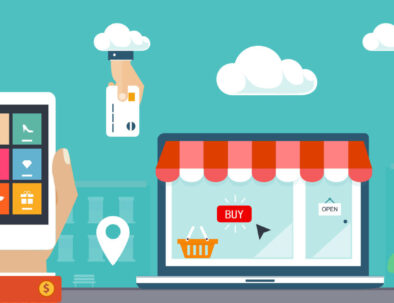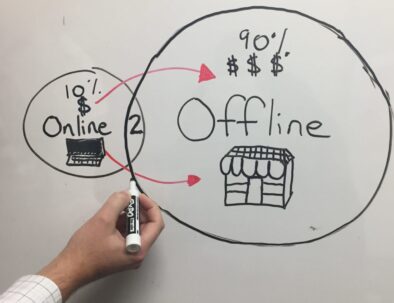With the continual effort to satisfy consumer expectations on same day or next day delivery, the way in which orders are to be fulfilled has to change. Such is the challenge of the modern supply chain: consumers increasingly expect to get what they want on-demand, even if suppliers cannot keep up. Spurred by the ease of remote purchasing and the promise of quick, low-priced shipping, same day delivery is dramatically changing the logistics landscape and requires an innovative new approach.
Digital Disruption Making Logistics Expensive
With the disruption, however, a new logistics panorama formed: a strengthened economic market made way for a boom in industrial real estate and third party logistics providers that would rise to the supply chain challenges presented by e-commerce. These tighter fulfillment timelines are leading to record breaking investments in 3PL and warehouse space. Over 70 million square feet of warehouse space was taken resulting in the highest utilization in over 10 years this past quarter. The availability of industrial real estate in the U.S. declined to 8.7% during the first half of 2016, meanwhile the industrial vacancy rate fell 5.2% — the lowest level since 2002. In addition, the past financial quarter marked the 25th-straight quarter of positive user demand, the longest stretch in more than two decades. Not to mention, USPS just raised their minimum shipping rate for packages from $2.45 to $2.62 (an 8% increase over last year) which is increasingly becoming unsustainable as shipping outpaces inflation, a cost many consumers do not want to bare for larger packages and companies that offer free shipping are eating. So as a result, the ability to satisfy consumer expectations is increasingly becoming more expensive and resulting in new innovative models.
New Supply Chain Emerging
With the competitive bar being raised to meet consumer expectations and the rising costs of same day delivery an innovative approach must be taken to satisfy demand. Rather than investing in warehouses and 3PL “there’s a new supply chain emerging” that is being built by retailers and wholesalers. The move towards utilizing stores as small regional distribution centers is becoming critical to this strategy. Partnering with retailers and shipping from stores is becoming a critical element to reach consumers on the same day – or the same hour – and at a low cost. Rather than investing in warehouses with no ancillary benefits other than temporary storage, partnering with retailers in local markets makes perfect sense as your products can get discovered by new customers in stores. Product is housed and stored, replenished, and can be shipped shorter distances to the consumer or be purchased for in-store pickup where no shipping is required at all. All of a sudden, branded manufacturers can participate in what’s known as omnichannel eCommerce.
Many brands are setup to ship large pallets of product to retail locations, not to handle shipping small parcels directly to consumers at a moments notice, while being able to process merchandise returns. Just as logistics companies have specialized in shipping large pallets to retail stores, Brennan said, “we’ll see the same third-party expertise in e-commerce” says Michael Brennan, executive director of the University of Wisconsin School of Business’.
Set Yourself Up to Win:
Follow these steps to establish a strategy to meet consumer expectations and become the brand of choice.
- If you don’t have a good supply chain, a good inventory-management system … that delivers to the front end, it’s never going to work for you. Invest in systems and partner with integrators to get the job done. Order management and logistics is a confusing arena in which your time is better spent developing and selling products consumers demand.
- Invest and partner early. The earlier you adopt a solution the cheaper it will be for your organization to adopt and provides a competitive advantage. If you decide to partner with retailers for example, showroom floor space is finite. The quicker you can partner the more likely your competitors will be sitting on the sidelines waiting to steal your spot in store.
- Sharing of data. Bridge the gap with your retailers by sharing sales and data. Organizations can no longer afford to isolate their data and must share in multiple directions. For example, brands must share what is selling in geographic regions from online store and retailers must share inventory data so brands can sell what they have.
- Partner with retailers now. Develop programs that incentive retailers to stock product and leave your competitors with no other choice but to attempt to open their own stores, which many of them will be unable to afford to do, plus the execution of this strategy is awfully difficult.
To learn more about ShipEarly and how our collaborative commerce can accelerate your sales and deliver on consumer expectations, contact us.





